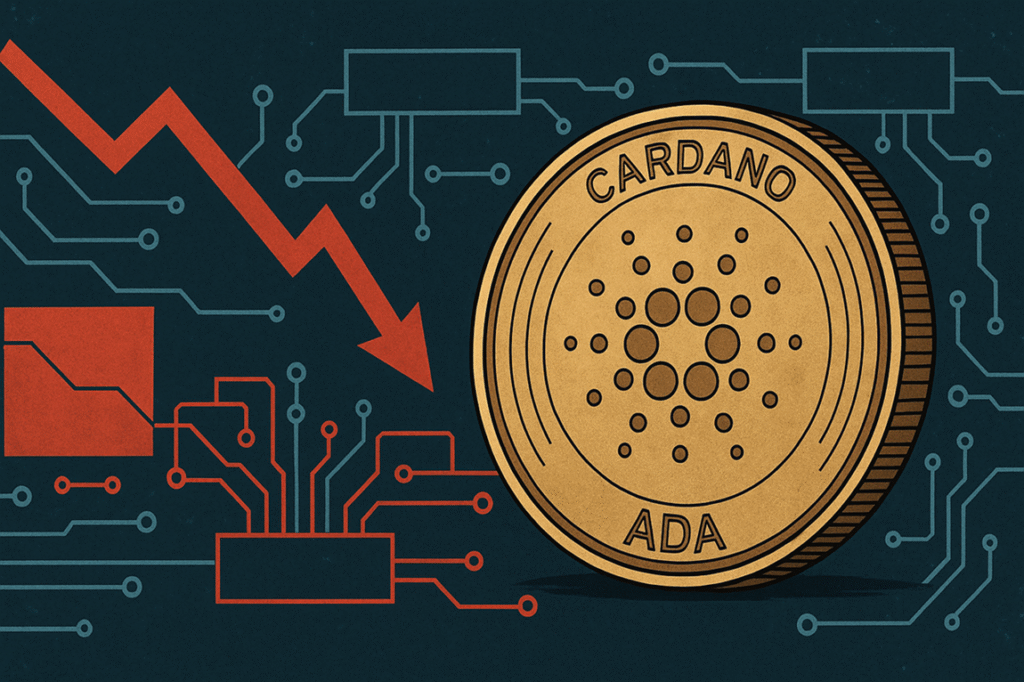In a rapidly evolving blockchain landscape, Cardano has often been both celebrated and critiqued for its ambitious goals and scalability challenges. As cryptocurrency enthusiasts and institutional investors seek reliable blockchain platforms that promise high transaction throughput, Cardano’s current technological narrative draws significant attention. This piece delves into recent discussions about Cardano’s scalability, how it measures up against expectations, and what the future might hold for this innovative blockchain platform.
Analyzing Cardano’s Scalability Challenges and Future Potential
Cardano’s Throughput Conundrum: The 18 TPS Limitation
The blockchain community was recently abuzz with critical remarks by Justin Bons, the founder and chief investment officer of Cyber Capital. Bons highlighted the inadequacies of Cardano’s current capacity, pointing out that the network’s throughput is capped at approximately 18 transactions per second (TPS). He expressed skepticism about Cardano’s potential to scale efficiently without tangible improvements to its infrastructure. Despite technological developments like Input Endorsers promising to boost capacity to 400 TPS, Bons questioned whether Layer 2 solutions such as Hydra genuinely address the core scalability concerns.
The response from Cardano advocates was swift. Jaromír “Cardano YOD₳” Tesař, a stake-pool operator, referenced the Ouroboros Leios paper, suggesting that the proposed new consensus layer could elevate throughput significantly, maintaining a global state while processing a notable number of transactions. Further supporting this were simulations from Anastasia Labs, indicating potential transaction handling at much higher rates when utilizing increased validator capabilities.
From Theory to Practical Implementation
Cardano’s innovations, particularly the Leios proposal, are aimed at optimizing transaction processing through a three-tier block structure. This approach would enable nodes to handle transactions in parallel before finalizing their sequence, potentially revolutionizing Cardano’s scalability profile. However, critics remain cautious, emphasizing that the roadmap needs more definitive timelines for mainnet implementation.
Stakeholders within the ecosystem argue for the current limitations, citing hardware accessibility and decentralization. They stress that the network’s design ensures broad participation by minimizing the resource needs to run nodes. Yet, this conservative approach draws parallels to past Bitcoin debates, fueling concerns about whether Cardano is prepared to make the necessary adjustments to increase its block size without compromising its principles.
What Is Ouroboros Leios?
Ouroboros Leios is a proposed upgrade to Cardano’s consensus mechanism designed to enhance the network’s scalability. It organizes blocks into three types—input, endorsement, and ranking blocks—allowing transactions to be processed in parallel, which is expected to increase the network’s throughput significantly.
Is Cardano (ADA) Prepared for Institutional Adoption?
Cardano’s pursuit of scalability and security through innovative solutions like Ouroboros Leios positions it well for institutional interest. However, tangible progress and timely implementation of these technologies are crucial for gaining institutional confidence and trust.
How Does Cardano’s TPS Compare to Other Blockchains?
Currently, Cardano’s throughput lags behind some of its more scalable peers, processing 18 TPS compared to others like Solana and Ethereum 2.0, which boast higher rates. Cardano’s future improvements, such as those proposed in the Leios framework, aim to address this gap significantly.
What Role Do Input Endorsers Play in Cardano’s Scaling Strategy?
Input Endorsers contribute to Cardano’s scaling strategy by optimizing how transactions are validated and propagated through the network. While they are set to increase transaction throughput to an interim target of 400 TPS, their full potential is realized when integrated with additional upgrades like Ouroboros Leios.
The journey to operationalize these advancements in Cardano is still underway, with its community and developers actively working to transform theoretical frameworks into practical reality. As the blockchain space continues to mature, the rigorous debates and developments surrounding Cardano will likely shape its path forward, determining its standing in the competitive landscape of cryptocurrency networks. The coming years will be pivotal for Cardano as it strives to meet its ambitious goals and gain broader acceptance within the blockchain ecosystem.

